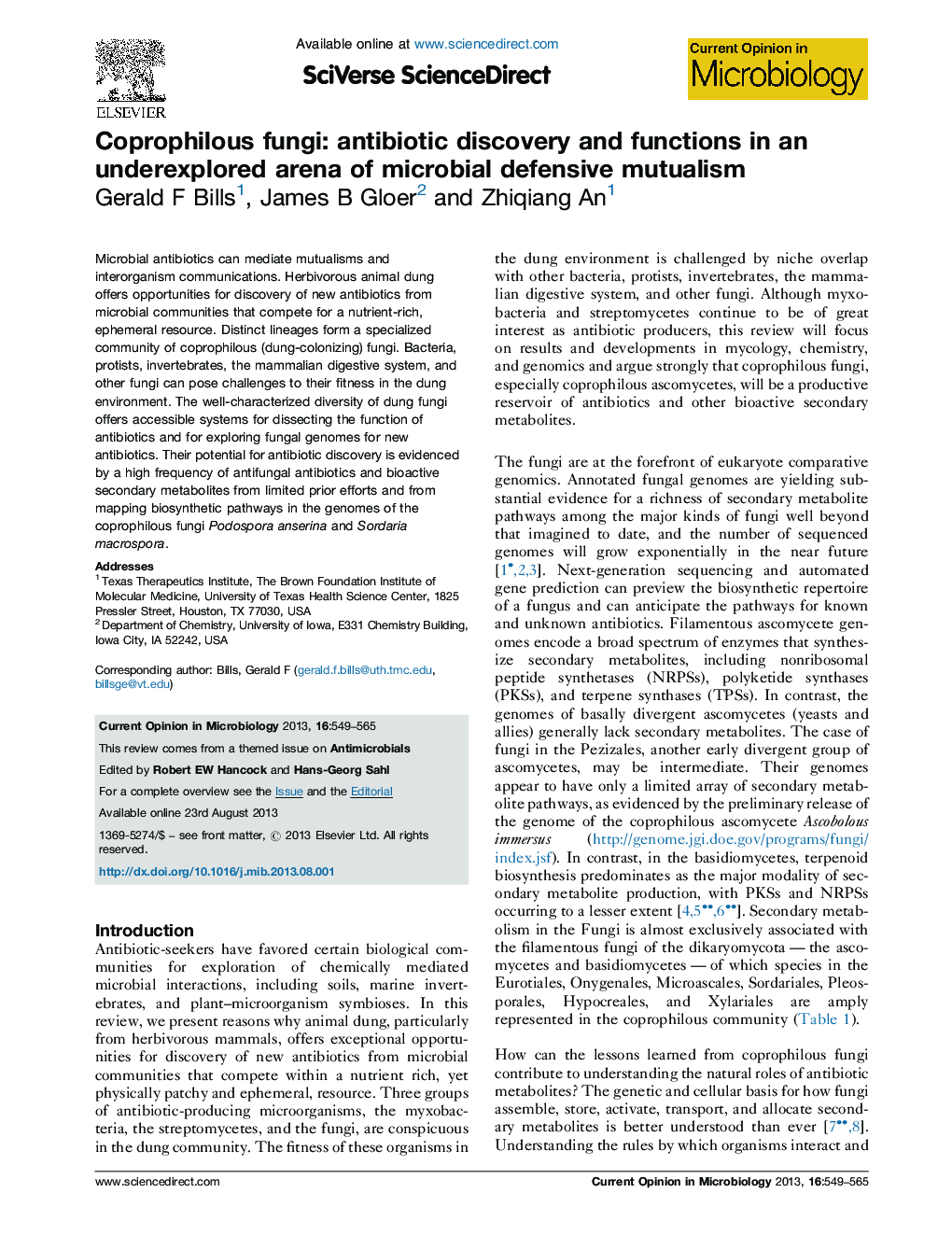| Article ID | Journal | Published Year | Pages | File Type |
|---|---|---|---|---|
| 6132085 | Current Opinion in Microbiology | 2013 | 17 Pages |
Abstract
Microbial antibiotics can mediate mutualisms and interorganism communications. Herbivorous animal dung offers opportunities for discovery of new antibiotics from microbial communities that compete for a nutrient-rich, ephemeral resource. Distinct lineages form a specialized community of coprophilous (dung-colonizing) fungi. Bacteria, protists, invertebrates, the mammalian digestive system, and other fungi can pose challenges to their fitness in the dung environment. The well-characterized diversity of dung fungi offers accessible systems for dissecting the function of antibiotics and for exploring fungal genomes for new antibiotics. Their potential for antibiotic discovery is evidenced by a high frequency of antifungal antibiotics and bioactive secondary metabolites from limited prior efforts and from mapping biosynthetic pathways in the genomes of the coprophilous fungi Podospora anserina and Sordaria macrospora.
Related Topics
Life Sciences
Immunology and Microbiology
Microbiology
Authors
Gerald F Bills, James B Gloer, Zhiqiang An,
